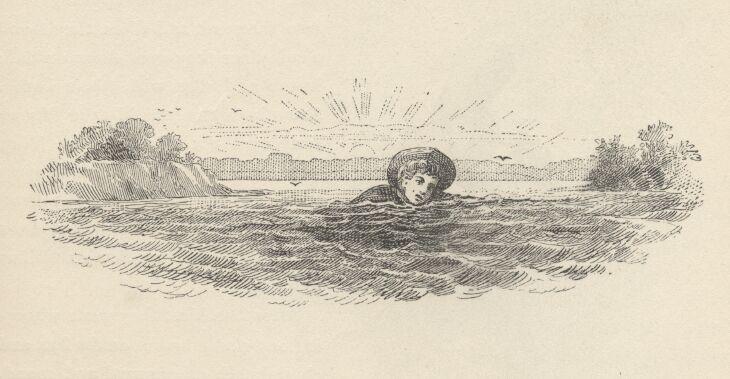Sigrid Undset was arguably the most successful female writer of her time, though her work isn’t particularly well-known in the United States. The Norwegian novelist wrote historical novels set in medieval Norway that find a delicate and absorbing balance between sweeping scope and psychological intimacy.
Undset rose to the pinnacle of her art form through long labor and painful personal trials. Her skill eventually garnered worldwide recognition when she received a Nobel Prize in literature in 1928. She even managed to achieve this peak artistic accomplishment while raising a family, experiencing exile, and working to support the national interests of Norway and Finland during and after World War II.

A Scandinavian Childhood
Sigrid Undset was born on May 20, 1882 in Denmark. Because her father, Ingvald Martin Undset, was an archeologist and historian, Undset grew up in a home steeped in history with manuscripts and artifacts scattered about the house. He had obtained his doctorate the year before Sigrid’s birth with a thesis on “The Beginning of the Iron Age in Northern Europe.”
Undset’s father sent his daughters to school partly because he knew he was dying and wanted them to receive an education that would allow them to support themselves. When he finally passed away in 1893, the family was placed in trying financial circumstances, and Sigrid had to leave school to begin working. Undset took a job as a secretary for an electrical engineering firm in Oslo where she worked from age 17 to 27.
From her teen years, Undset yearned to be a writer. As Brad Leithauser related in his introduction to “Kristin Lavransdatter,” Undset wrote to her friend Andrea Hedberg during her teens, “Sometimes I want so much to write a book. ... I’ve started a few times, but nothing comes of it, and I burn it at once.” And again, “It’s an artist I want to be, a woman artist.”
In between working hours, Undset spent her time reading and writing, trying to make her dream materialize. She completed writing two historical novels set in the Middle Ages during this time. However, with a remarkable lack of perception, an influential editor told her, “Don’t attempt any more historical novels. You have no talent for it. But you might try writing something modern.”
Undset did just that, publishing a contemporary novel, “Marta Oulie,” in 1907. It centered around a woman who is unfaithful to her husband—establishing the themes of romance, marriage, and sexuality that would characterize much of her oeuvre. Several modern novels followed, bringing Undset some degree of success and recognition. However, her magnum opus was still several years off.
An Eventful Life
During Undset’s travels, her life took a fateful turn. While in Italy, she met and fell in love with Norwegian painter Anders Castus Svarstad, who was 13 years older than her, married, and the father of three children. Svarstad eventually divorced his wife and married Undset in 1912. They had three children together.Undset’s relationship with Svarstad was not to last, however, and the couple separated in 1919, leaving Undset to raise six children—including three from her husband’s previous marriage that she willingly took in when their parents would not. Two of the six children she raised were severely mentally handicapped. With characteristic fortitude, Undset managed to pen her greatest works while caring for this brood.

Undset’s tumultuous love affair, experience writing both modern and historical fiction, and continued devotion to a faded historical past flowed together into a powerful creative coalescence. The result would be what many consider her masterpiece. “Kristin Lavransdatter,” a trilogy of love, violence, and spiritual pilgrimage, was set in medieval Norway and published from 1920–1922.
The plot begins when a young woman follows her heart into an ill-advised love affair with a man who has already fathered children by another woman. Though Kristin and her lover, Erlend Nikulausson, eventually marry, Kristin soon discovers that having a thrilling tryst with Erlend is one thing, while being married to him is another—and much harder—thing.
This “high price,” the burdens of married life and the disappointments of a love that fell short of expectations, led both Sigrid Undset and her fictional heroine Kristin Lavransdatter to look hard at the yearning of the human heart and the spiritual dimension of being human. Often, as Shakespeare’s Helena says in “A Midsummer Night’s Dream,” “My legs can keep no pace with my desires.”
In other words, our desires seem to outstrip what the world can offer and what our feeble, mortal frames can sustain. Our hearts outweigh the earth and all the stars and all that’s in them.
Brunsdale beautifully described what Undset came to understand and portray in her medieval novels: “Those things that we, with our limited earthly vision, want so badly that we betray what we love best in order to possess them, fade to insignificance compared to the needs of the immortal soul.”
An Award for Brutal Honesty
“Kristin Lavransdatter” was followed up by another historical series of novels, “Olav Audunsson,” published between 1925 and 1927. Chiefly because of her magnificent novels about medieval Norway that bring to life equally a far-off time and the timeless workings of the human heart, Sigrid Undset received the Nobel Prize in Literature in 1928.“Intimately combined with the consciousness of the nation, in her depiction, honour retains all the rigour and all the weight that it had for the chevaliers and great landowners of the fourteenth century. The demands of honour are clearly stated, and the conflicts it creates are worked out regardless of their brutal consequences. Religious life is described with startling truth. Under Sigrid Undset’s pen it does not become a continuous holiday of the mind, penetrating and dominating human nature; it remains, as in our day, insecure and rebellious, and is often even harsher.”

Undset returned to her home in Norway in 1945. She wrote nothing more after her return to Norway, although a handful of her works were published posthumously. Undset passed away in 1949 at the age of 67.
“In sales, number of translations, significant honors and reader loyalty,” Leithauser wrote, “Sigrid Undset in 1928 was probably the most successful woman writer in the world.” Her success derived from her great technical skill and meticulous research but, most importantly, from her clear-eyed understanding of psychology and spirituality.
In both her life and her fiction, Undset sounded the depths of human life, uncompromisingly facing the reality of the human spirit and its mysterious, insatiable longings.








